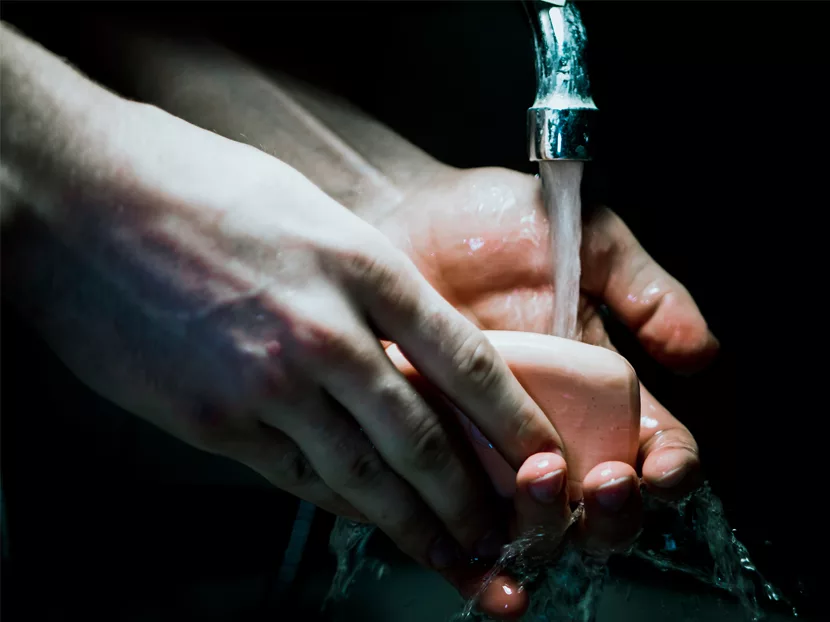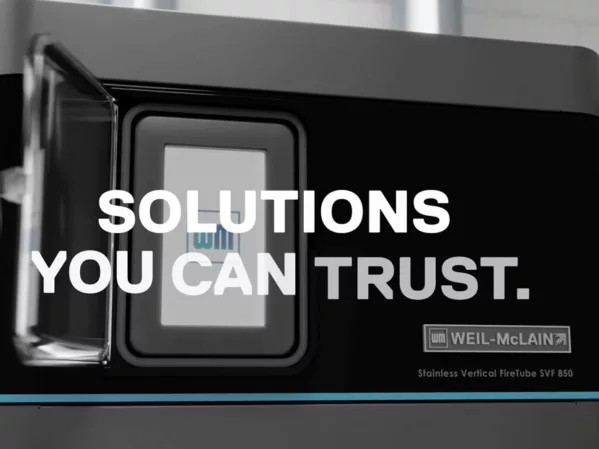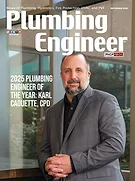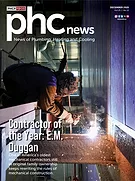In the last code change cycle, there was a code change proposal to eliminate the requirement for tempered water at public lavatories. The proposal was as follows:
“419.5. Water for public hand-washing facilities. Lavatories and group wash fixtures ted in public toilet facilities shall be provided with cold water, tempered water or both. Where tempered water is supplied to such fixtures, the temperature shall be limited to 125 F (52 C) by means of temperature control device that conforms to ASSE 1070/ASME A112.1070/CSA B125.70, CSA B125.3 or ASSE 1017.”
The code change proposal was defeated during the code hearing process for many reasons; however, since then, it seems that many people have considered the proposal worthy of more consideration. I agree with the code officials who turned down this proposal. It was a bad proposal for health and safety reasons and it as trying to misapply the ASSE 1017 standard to control temperatures at the point of use.
The proposal was based on the proponent’s observation that most people end up washing their hands in “cold” or room temperature water. However, people were not choosing cold water to wash their hands. What was happening is that the heated (hot) water in the branch line to the lavatory had cooled off to room temperature or ambient temperature water, meaning the temperature of the water coming out from the faucet was only room temperature or ambient temperature. This cooler-temperature water was forced upon people washing their hands in public lavatories.
It is what happens with poorly designed, installed or maintained systems. So, instead of solving this design, installation and maintenance problem by routing the circulated hot water line closer to the fixtures, the proponent suggests we should all live with poorly performing plumbing systems by eliminating the requirement for tempered water at public handwashing facilities.
The reason statement indicated by the proponent was based upon energy savings and cost of construction savings associated by not being required to install and maintain hot water piping, mixing valves or water heaters. Hot water will still be required in other parts of the building; so, the conclusion that costs associated with the purchase, installation and maintenance of these items is not well supported.
The reason statement also included some erroneous information about the growth of Legionella bacteria in warm water. Legionella bacteria grows in water temperatures between 68 F to 122 F, which is often the temperature range of the cold water, ambient temperature water and tempered water flowing from lavatory faucets. So, this proposal does not eliminate this health concern.
Better Plumbing System Design
Instead, all these concerns are best addressed by better system design. The proper design would be to store or heat water to a disinfecting temperature well above 131 F. Then, a master temperature-actuated mixing valve should be installed to reduce the temperature to a relatively stable temperature for distribution throughout the hot water supply and return piping system.
Generally, there is a 10-to-20-degree temperature drop from the source (water heater outlet or mixing valve outlet) to the hot water return piping connection to the water heater. The lowest hot water distribution temperature is generally just before the hot water return to the water heater. To monitor these temperatures, a temperature gauge on the outlet of the mixing valve and a temperature gauge at the return connection before the return line connects to the water heater cold water inlet or hot water return connection on the water heater should be installed.
Thermostats located at these critical control points will assist with maintaining the temperature in the hot water return system above the Legionella bacteria growth temperature of 122 F.
As a design professional, I like to see the hot water return maintained at least two degrees above 122 F as a safety factor if a digital temperature-actuated mixing valve is installed; or about 5 to 7 degrees above 122 F when a liquid-filled thermal element-type of temperature-actuated mixing valves is used, depending on the flow rate and valve size. So, for a system with a 20-degree temperature drop across the system and the use of a digital temperature-actuated mixing valve on the hot water system, I would set the mixing valve outlet at 144 F and maintain at least 124 F in the hot water return connection just before it returns to the water heater (see table).
Don’t forget, when a temperature-actuated mixing valve is used, the return line needs to split after the circulating pump and route one line to the water heater and route the other line to the cold-water inlet or tempered water connection on the temperature-actuated mixing valve. This is to allow tempered water mixing when there is no flow from a fixture in the system.
In the past, older designs allowed hot water to be at least 100 ft. from the source or a circulated line. More recent codes reduced the distance to within 50 ft. from the source or a circulated line. Recent codes reduced flow rates for metering faucets. These flow rates are unreasonably low to the point that hot or warm water rarely reaches the fixture. In these instances, the codes have created conditions where the water is guaranteed to be stagnant in branches to metering faucets and the temperature of the water flowing from the faucets is room temperature or ambient water temperatures.
In the proponent’s reason statement, it was erroneously claimed that maintaining temperatures in the range of 85 F to 110 F, as currently required in the code for delivery from a lavatory faucet, is unsafe because the temperature range provides ideal conditions for the growth of pathogens and bacteria dangerous to humans. So, the proponent suggests that colder water is safer than hotter water. But cold water also can be in the Legionella bacteria growth range.
What the proponent fails to realize is the usage temperature of water, which is in the Legionella bacteria growth range, is not what is stored and distributed. Rather, with proper system design, water can be stored and distributed at temperatures above 122 F, which does not promote Legionella bacteria growth, and then mixed down to a usage temperature at the point of use.
Hot water temperatures should be maintained above the Legionella bacteria growth temperature range throughout the entire supply and return distribution system, as required by ASHRAE Guideline 12 since 2000.
The systems the proponent was observing were poorly designed, poorly installed or poorly maintained. The solution should not be to eliminate tempered water for hand washing, where it is desired for many purposes. I talked to many people and asked what they preferred. The vast majority preferred having hot or warm water to wash their hands. The following is a list of reasons they gave me for having tempered water for lavatories in public washrooms:
Hot or warm water feels good
and promotes good hygiene
Water in northern climates can reach very cold temperatures and cold water does not promote adequate washing or cleaning when it becomes uncomfortable. Cold water in many northern climates has been measured as low as 34 F. In locations where cold water is flushed to a fixture branch because of heavy usage, the water would be very uncomfortable and would discourage cleaning especially with children or people with sensitive skin.
Many years ago, I performed research on cold water temperatures related to emergency fixture flushing temperatures. It was determined that when the cold-water temperature dropped below 68 F, water was uncomfortable and too cold for participants to want to use.
During the research, I found there was not much previous research on water temperatures related to plumbing systems. A lot of information associated with cold water temperatures and hypothermia was available but it was based on Navy research for how long it took sailors submerged in cold water to experience hypothermia. This research appeared in boating safety literature for persons who go overboard in cold water. Not much research has been done on water temperatures related to comfort levels.
Hot or warm water cleans better
Employees using public washrooms need to have warm or hot water to wash their hands of grease or other contaminants effectively.
Use of hot or warm water is taught
Many health departments post signs to wash your hands with “warm” soapy water.
When children or elderly make a mess in a restaurant with food and need warm water to wash up.
Mothers do not want to use cold water to change a baby in a public restroom.
Ambient temperature or room temperature water cannot be guaranteed during periods of high usage.
One of the people I surveyed was a mom who recalled an experience where only cold water flowed from the lavatory faucet in the restroom. The child screamed out every time the cold towel touched the child.
Comments were also made about the need for tempered water for cleaning food spills off clothing, cleaning make-up and other feminine clean-up issues faced by women.
On the subject of allowing cold water only in public restrooms, it is no surprise building owners and property management companies were in support reasoning that it eliminates the cost of supplying and maintaining hot water systems.
Warm Water Preferred
I am sure the plumbing manufacturers and plumbers’ unions would not be in favor of this issue. Personally, I like warm water. I prefer to go into a public restroom, turn on a faucet and within a few seconds have hot or warm water flowing from a fixture.
I thought, what about the users who want warm water? Instead of making up excuses for removing plumbing systems with anecdotal evidence that is not peer reviewed, why not change the codes to ensure that when we do wash our hands, we will get warm, tempered water? The solution should be to circulate through each plumbing chase with hot water fixtures to within inches of the fixture to ensure hot or tempered water from a point-of-use mixing valve within seconds.
I also would eliminate the requirement for 0.5 gal./min. and 0.25 gal./cycle for metering faucets. These lavatories with metering faucets should have the same flow rate as other lavatories. This one code requirement has single-handedly increased stagnation and bacteria growth in most hospitals, where the most vulnerable population with immune deficiencies reside.
One very large hospital built a new wing with all infrared faucets with these very low flow rates. The old hospital had single-handle lever-type faucets and flow rates around 2 gpm each. The new hospital wing had metering faucets adjusted to reduce the metering time to about 5 seconds.
This low flow rate, combined with metering cycles, only allowed about 0.05 gal. of tempered water, which was about 0.025 gal. of each water temperature to flow from each side of the faucet. It created a condition where the water stagnated in the new wing of the hospital and Legionella bacteria was able to grow. The problem did not stem from the parts of the faucets but from the flow rate and the code requirement that caused stagnant water conditions and high Legionella bacteria counts in the water supply.
The solution is simple: eliminate the flow restriction. However, at higher flow rates, it may change the size needed for solenoid valves. It’s easy if you know what to look for but a lot of people are trying to codify the design process who do not understand plumbing systems, fixtures, fittings, engineering and construction concepts.
I would like to see more design professionals involved in the code and standard process. Currently, there are very few design professionals who regularly attend the code and standard meetings.
Misguided Code Changes
I rank the suggestion of eliminating hot water right up there with the advice given in the country doctor skit from the old “Hee Haw” television comedy show. Members of the ASPE Young Professionals should look it up on YouTube. In the skit, someone would go to the country doctor’s office and say to the doctor, “Hey Doc, it hurts every time I raise my arm like this.”
When the patient would ask the doctor what to do about it, the doctor would always say, “Well, if it hurts every time you raise your arm, then don’t do that!”
The doctor did not solve the problem but he dealt with it. The case of eliminating hot or warm water in public restrooms is similar to the country doctor’s advice. It does not solve the problem of lacking warm water to wash your hands — the problem — so some in the plumbing engineering said, “Don’t heat the water.”
Then they proceeded to list some reasons or excuses why eliminating hot water would save money in construction costs and save energy by not heating water. Their reasoning about room temperature water promoting Legionella bacteria growth is not based on good design practice but upon their understanding of plumbing — which is poor design practice, so it is irrelevant.
They say you may still need to heat water in colder climates but do not explain how to accomplish it. Legionella bacteria cannot grow in a properly designed system that pasteurizes the hot water and maintains water temps outside of the growth range. People could save a lot more money if we eliminated all plumbing systems in buildings and just gave everyone a shovel but then we would be back to the Dark Ages with plagues and epidemics.
In my opinion, taking away the requirement for hot water for hand washing is not solving the problem. The problem is easy to solve for design professionals.
A recent trade publication article repeated the suggestions to eliminate tempered water in public restrooms. The author seems to be singing the same song as the failed code change proposal. Design professionals should be diligent and speak up to prevent returning to the Dark Ages.
A recent example of misguided code change proposals was a change to recirculate hot water back through the cold-water pipe. The water conservation folks were embracing this idea because proponents said it saves water while providing instant hot water. It was a terrible idea on many levels, not to mention the bacterial growth, cross connections of systems and the inability to get clean cold water for drinking or brushing teeth but the committee was thinking about that product and how nice it would be in their home when they turn on the faucet.
I pleaded against this code change and said it would be making it legal to cross-connect plumbing systems with these circulators. For example, we could soon see problems in apartment buildings or office buildings where one tenant decides they want to install one of these circulators under a lavatory that injects the hot water into the cold water pipe to send it back to a central water heater. Then, everyone in the building will be drinking hot or warm water, cooking with hot water and brushing their teeth with hot water.
The water has been circulated through the hot water tank, where bacteria in improperly maintained systems could be circulated throughout the cold-water system, allowing biofilms to develop in cold-water piping. Anode rods are dissolving magnesium or aluminum metals into the water heater when they allow sending of the hot water back to the water heater in the cold-water pipe. Tenants in every other apartment in the building will receive warm water in their cold-water piping!
I believe it is just a matter of time before a Legionella outbreak occurs or some other health issue related to this technology and code change. I tried explaining this to the code committee. I also explained that we already have a way to get instant hot water at fixtures; we design or install a dedicated hot water return piping system to circulate hot water closer to the fixtures.





